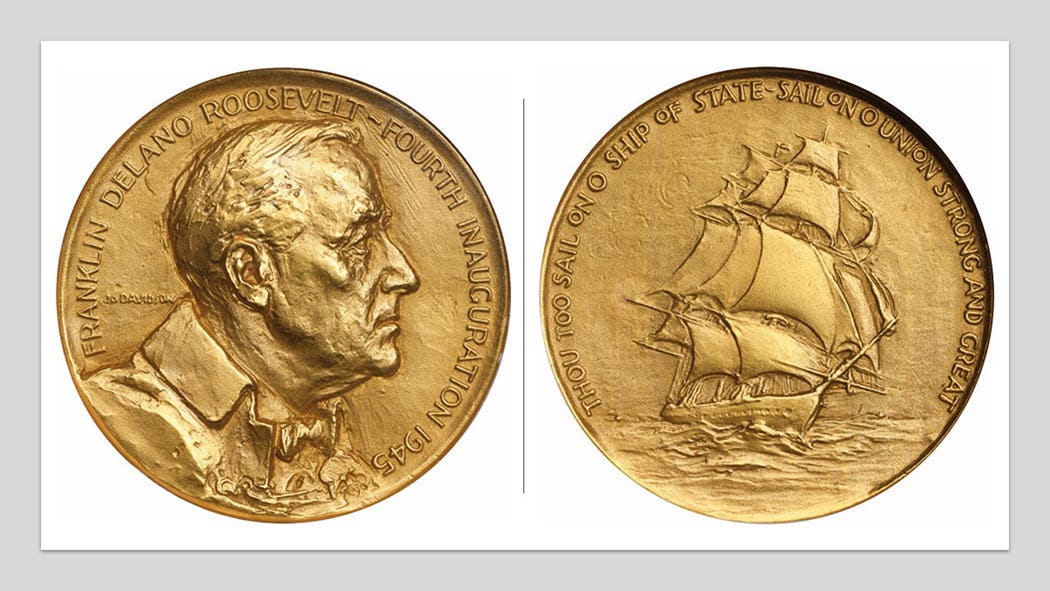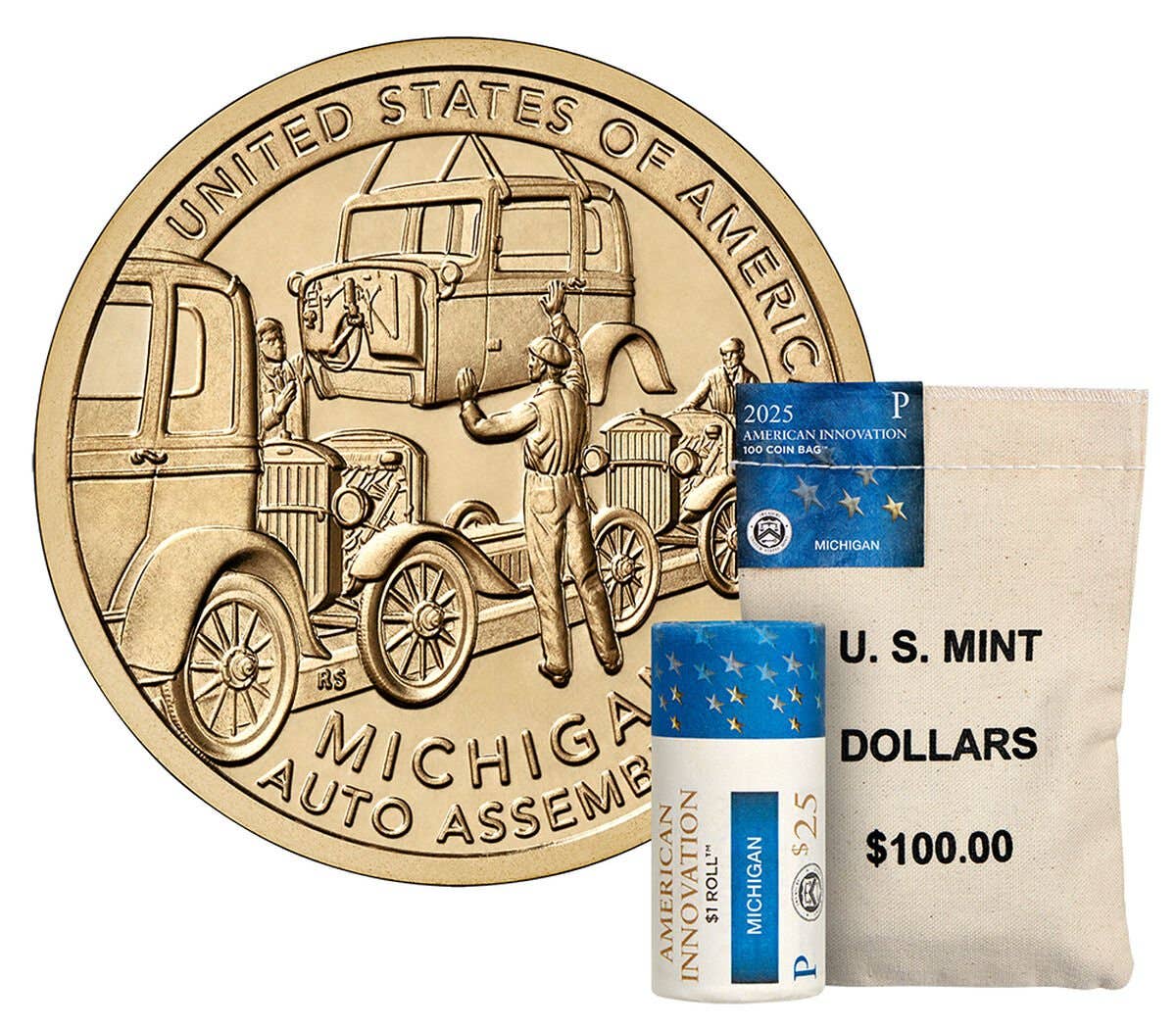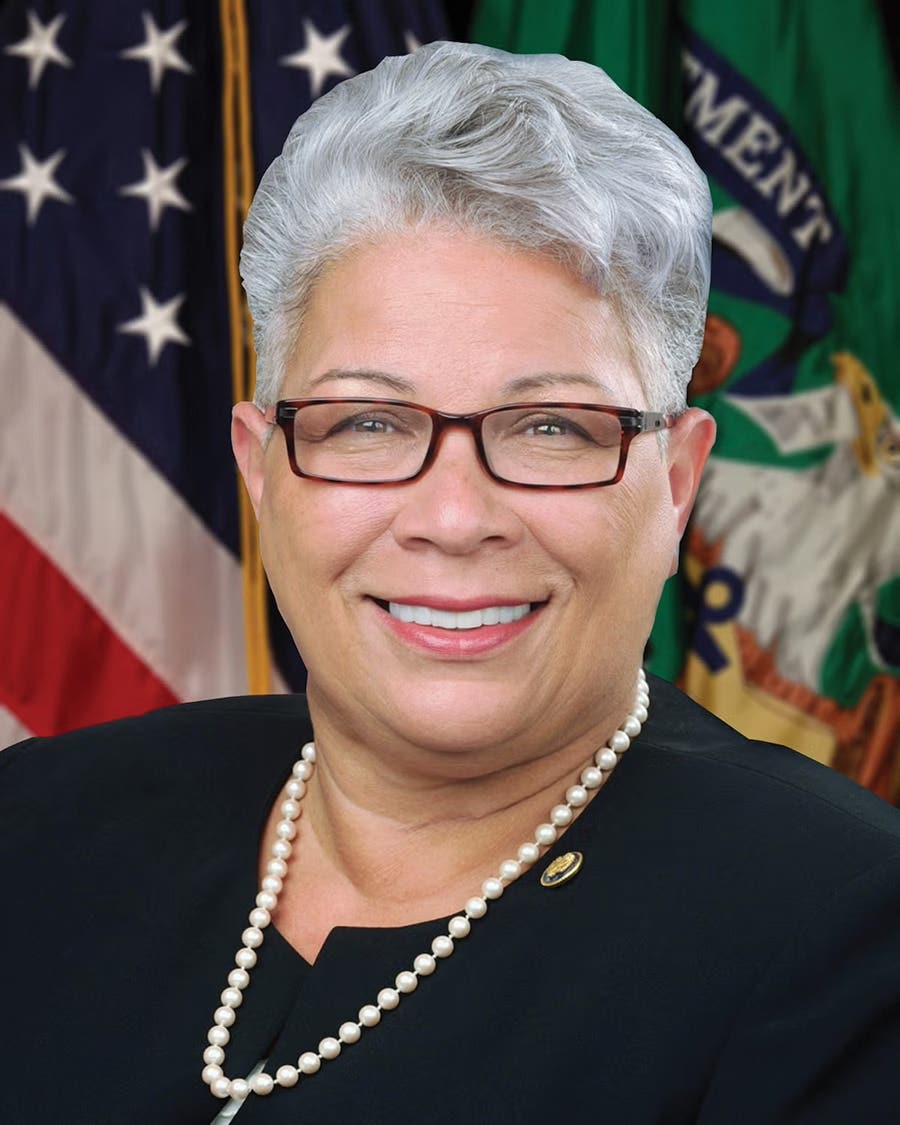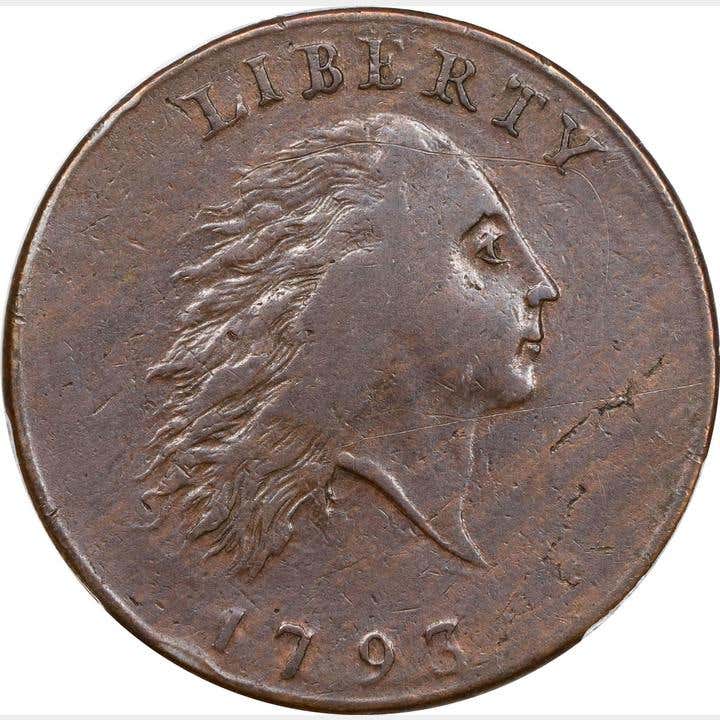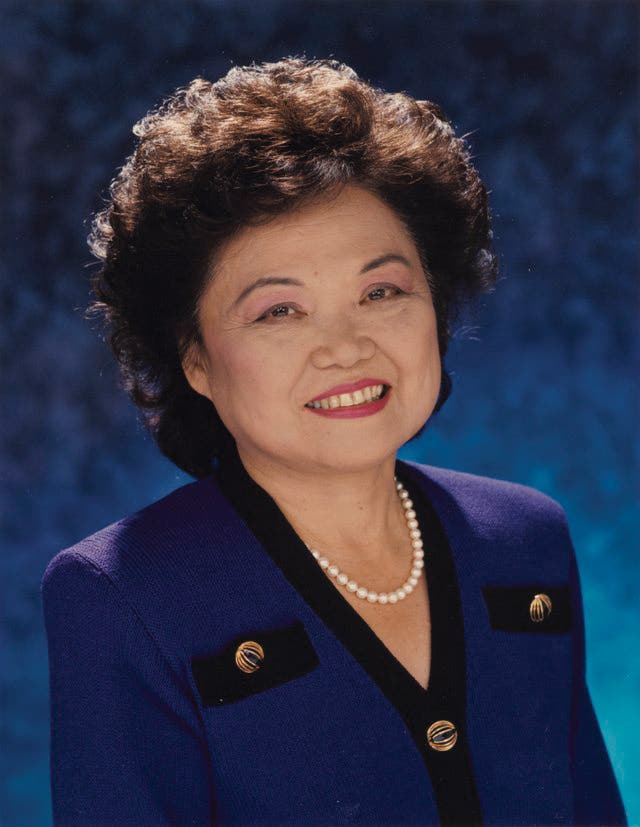Mysterious Past of 1913 Liberty Head Nickel: Part Two
This is the second part of a two-part feature on the earliest known showing of the 1913 Liberty Head nickel and the spread of the coin’s popularity. The first part…
This is the second part of a two-part feature on the earliest known showing of the 1913 Liberty Head nickel and the spread of the coin’s popularity. The first part explored the display of the nickel by former Mint employee Samuel W. Brown at a Chicago Coin Club meeting in early December 1919, prior to his first advertisements offering to buy examples of the coin for $500, and then $600, appeared in print.
So here is where two little-known but intriguing items impact this story of the 1913 Liberty Head nickel. The first involves a small-town dealer and the second a famed collector.
1.) The small-town dealer: This one is a bit hard to believe, if not inconceivable. How did a 17-year-old sometimes coin dealer, sometimes The Numismatist advertiser, from a small town in Kansas, come to be running buy ads for 1913 Liberty Head nickels at the same time as the suspected mastermind behind the rarity, Samuel W. Brown?
When Harry E. Kelso, of Arma, Kan., began advertising for the coins, in late January 1920, the ANA convention where Brown would leave his nickel on display was still seven months away; fewer than 20 people had viewed Samuel W. Brown’s nickel at the Dec. 3, 1919, Chicago Coin Club meeting (see Part I in the Sept. 29 issue); and just two of Brown’s now well-known “wanted” ads had made their way into The Numismatist. One of them, Brown’s January 1920 ad, where he upped the ante from $500 to $600, ran concurrently with most of Kelso’s ads.
The teenager placed the following in his local weekly newspaper, the Arma Record, on Jan. 22, 1920:
“I WILL PAY $5 to $25 for a 1913 Liberty Head U S Nickle [sic]; Thousands in circulation. Watch your change[.]
“Harry Kelso, Arma, Kansas”
He paid for the same insertion the following week, in the Jan. 29, 1920, issue, but included the admonition, “Buffalo heads not wanted.” He must have believed there were plenty of the 1913 Liberty Heads to be found, even in a small town, as Arma was really small. According to Wikipedia, there were just over 2,000 residents in 1920.
Shortly after his Jan. 22, 1920, ad in the Arma Record, Kelso expanded his search to nearby Pittsburg, Pa., a town of around 18,000. Printed in the “Want Ads” of the Jan. 24 issue of The Sun, Pittsburg, Kan., was:
“WATCH YOUR CHANGE – I will pay $5.00 to $20.00 for a 1913 Liberty head U.S. nickel. Harry Kelso. Arma, Kas.”
The same ad text is in the Jan. 25 (there was no Jan. 26, Monday issue) through Jan. 29 issues of The Sun as “Kelso.” From the Jan. 30 issue, the name was changed for some reason to the incorrect “Kelson,” and “no Buffaloes wanted” was added. The modified ad then ran in the Jan. 31 through Feb. 8 issues (there was no Feb. 2 issue). This was a total of 14 placements.
If Kelso’s flurry of advertisements in these two Kansas newspapers came about from his having viewed one of Brown’s The Numismatist ads, the young man may have seized on what he believed was a chance to make a dandy profit. From $25 to $600 was a big leap.
Though, how he got to “thousands in circulation” off of Brown’s ads, which made no mention of mintage, is hard to fathom. The same would be true if he somehow learned of the rare nickel from a CCC member.
William F. Dunham was not known to have owned a 1913 Liberty Head nickel, yet two newspapers quoted him as saying he was offered $600 for his example of the rarity.
2.) The famed collector: The more significant of these two items involve William F. Dunham, and apparently led to the flooding of newspaper question-and-answer columns with queries from those who owned 1913 Indian Head nickels and thought they had struck it rich.
Dunham’s reported connection with the 1913 Liberty Head nickel came up after the publication of my 2017 feature, an excerpt of which appeared in the July 23, 2017, Numismatic Bibliomania Society’s E-Sylum, www.coinbooks.org/esylum. At the time of the 2017 article, I was unaware of a very curious reference to Dunham, the 1913 Liberty Head nickel, and the 1920 convention that can be found in two contemporary newspapers.
This mystifying link was discovered by E-Sylum reader Julia Casey and reported to E-Sylum editor Wayne Homren, who relayed it to me. While I don’t know how it came about or what it truly means, it is clearly tied to what happened later – the explosion of interest in the 1913 Liberty Head nickel.
The following news item ran in the Aug. 25, 1920, issue of The Englewood Economist, Chicago, the day after the ANA’s annual banquet at the Hotel Sherman. It noted, under the headline, “Watch for 1913 Nickels: Some Are Worth $600”:
“‘A 1913 nickel without a buffalo’s head on it is worth $600. I was offered that for mine today,’ said W.F. Dunham, 724 Oakley Blvd., at the annual dinner of the American Numismatic Association in the Hotel Sherman last night.”
The same mention was printed in another Chicago paper, the Aug. 31, 1920, Suburbanite Economist.
The recorded statement from Dunham can be read two ways: Either he was offered $600 for his nickel at the ANA banquet, or he was offered $600 sometime that day (Tuesday, Aug. 24). The Chicago street address given for Dunham, 724 Oakley Blvd., is correct. Yet Dunham is not known to have ever owned one of the nickels. So the quote is puzzling.
He is known to have attended the ANA banquet in question. By contrast, Brown, who said he was willing to pay $600 for proof 1913 Liberty Head nickels, was at the convention “for a short time” on Monday, the day before the banquet. Brown is not listed among those at the dinner and may well have left for home on Aug. 23.
Dunham, who was very active in the ANA and the CCC, was one of the nation’s leading collectors. His collection was rightly deemed one of the finest. Among other delectable U.S. coinage rarities, he owned the Class I 1804 Draped Bust silver dollar on display at the convention, where it was dubbed the “Chicago dollar.”
He wasn’t at the CCC’s Dec. 3, 1919, meeting where he would have seen Brown’s coin. He was a member of the group that toured the Philadelphia Mint in October 1919, and he is in the banquet photograph on p. 431 of the November 1919 issue of The Numismatist.
He may have first learned of the rarity through Brown’s ads, in Philadelphia in 1919, or at the 1920 convention in Chicago. Most probably it came from fellow CCC members who were at the meeting where Brown joined the CCC and exhibited his nickel.
Dunham died in 1936.
In 1941, B. Max Mehl sold Dunham’s collection. It included such ultra rarities as the aforementioned Class I 1804 Draped Bust silver dollar, the Dexter specimen; the 1822 Capped Bust half eagle; the 1802 Draped Bust half dime; and the 1823 Capped Bust quarter dollar. –“The first and only collection ever offered to contain ALL of these great rarities, and many, many more!” heralded Mehl’s ad in the February 1941 The Numismatist.
There was no 1913 Liberty Head nickel.
Flickers of Future Fame
Important to this story, no matter the origin or veracity of the two Dunham-related news pieces, is that their printing lit the fire. Soon, everyone was rooting through their change – most thinking they had discovered a rarity with each 1913 Indian Head nickel culled from pockets, purses or old-coin stashes.
Within a week after the Dunham references, news was being broadcast by newspapers throughout the nation, in big towns and in small, that a low-denomination coin – one that could, in theory, pass through anyone’s hands – was worth $600.
Most of the news blurbs were similar to the following quip from the Aug. 29, 1920, News-Democrat, Paducah, Ky., “A 1913 nickel without the buffalo’s head on it is worth $600; all the rest are worth about a cent and a half.”
These continued to spread into at least February of the next year (all quoting the $600 premium), hitting newspapers in the following cities and towns, as well as likely many others: Seward, Alaska; Bisbee, Ariz.; Dixon, Ill.; Rock Island, Ill.; Springfield, Ill.; Elkhart, Ind.; Long Island, Kan.; Topeka, Kan.; Wichita, Kan.; Detroit; Lansing, Mich.; Muskegon, Mich.; Port Huron, Mich.; Bismarck, N.D.; Buffalo, N.Y.; Antlers, Okla.; Muskogee, Okla.; Chambersburg, Pa.; Harrisburg, Pa.; Newcastle, Pa.; Wilkes-Barre, Pa.; Salt Lake City, Utah; La Crosse, Wis.; and Cheyenne, Wyo.
The impact was readily apparent in Chicago, where a flood of inquiries was already taxing newspaper columnists, such as Marion Holmes, less than four months after the ANA convention. In the Dec. 6, 1920, Chicago Daily News, a reader, “MRS. L,” was aware of the rare nickel, and Holmes complained of “continuous inquiries concerning that mystical and valuable nickel.” However, Holmes mistakenly replied that there was no such rare five-cent piece.
MRS. L. wrote, “I read some time ago that there is a reward for a 1913 nickel without the buffalo. Will you kindly inform me through your column if this is a fact and where I can send it to obtain the premium?”
Holmes replied that it was not a nickel that was worth a premium but a dime. “Those who owned nickels of that date made themselves believe that it surely must have been 5 cents instead of 10 cents that was meant, and so letters of anxious inquiry have poured in a flood into the office of The Daily News…”
In “Exchange Chuckles,” a column that cobbled together diverse news items it found to be humorous, the Feb. 8, 1921, Buffalo Morning Express, Buffalo, N.Y., grabbed this from the New York Syracuse Post-Standard:
“Salina – I see a 1913 nickel without the Buffalo head is worth $600.
“Warren– That’s the only one, then, that will buy a decent cigar.”
Price Drop; Rabbits for Trade
The 1913 nickel mania quickly ramped up, as shown by the following snippets from newspapers dating from 1923 through 1937. Those who had 1913-dated Indian Head nickels inundated editors and columnists with questions on how to cash in. While those hoping to buy 1913 Liberty Head nickels dropped the $600 value. In its place were much more modest purchase offers, ranging from small amounts of cash to rabbits to knitting machines. No buffaloes wanted.
• In May 1923, Smith Coin Dept. was proposing to pay $25 for a 1913 Liberty Head nickel. Ten cents and a stamp would get its latest catalog. (May 27, 1923, Augusta Chronicle, Augusta, Fla.)
• Need a rabbit? Clarence Musser, of Mount Joy, Pa., was tendering a pair of Flemish Giant rabbits, or a $5 bill, for “a 1913 nickel, old type, not buffalo type, in good condition.” (Swap ads, June 15, 1923, The News-Journal, Lancaster, Pa.)
• In 1924, columnist James B. Field apparently had been receiving a lot of questions concerning the 1913 Liberty Head nickel. Field wrote, “And first that ‘1913 nickel’…,” detailing that none of the Indian Head nickels “in ordinary conditions” commanded a premium. There were a few, he said, probably five, of the Liberty Head type that were valuable and would bring $50 to any price you might ask. (April 27, 1924, Jackson News, Jackson, Mich.)
• No need for two rabbits, giant or otherwise? How about a brand new knitting machine? In 1926, Peter Schoblocker and Valentine Heigel of Jacksonport, Wis., proffered the same in their classified ad: “TAKING IN TRADE – 1913 nickel liberty head (not buffalo) or 1894 dime. ‘S’ mint mark, for $60.00 knitting machine, never used.” (Feb. 5, 1926, Door County Advocate, Sturgeon Bay, Wis.)
• Fifty cents was the offer from a youngster writing to “Aunt Jean’s Receiving Station.” Leland Dugan, of Newport Center, Vt., wrote to Aunt Jean, “I will give 50 cents for a 1913 nickel with a liberty head (not buffalo).” He would part with the same amount for an 1884 dime. (May 16, 1926, The Brooklyn Eagle, Brooklyn, N.Y.)
• E.A. Van Pelt, of Gaylesville, Ala., wanted to pay $25 for a “1913 nickel (no buffalo, liberty head)…” He was also willing to cough up $25 for an 1894-S dime, $500 for an 1804 silver dollar, $25 for an 1870-S or 1873-S silver dollar, and $600 for an 1822 $5 gold piece. (Aug. 5, 1927, The Coosa River News, Centre, Ala.)
• By 1929, “Mr. Fixit” was getting frustrated with all of the questions concerning this coin. In the Feb. 14 issue of the Oklahoma News, the handyman lamented, “I am deluged with queries concerning the famous 1913 liberty nickel, worth $50.” However, he didn’t really “fix” the problem, as he said the valuable one was not the common buffalo nickel but one that had an Indian head on one side and a “V” on the other. (Feb. 14, 1929, Oklahoma News, Oklahoma City, Okla.)
• Mrs. H.E. Madden reached out to the Brooklyn Eagle, in 1929, advising reader R.C.B. that if he wrote to the Ace Coin Co. of Wheeling, W.Va., he could get $50 for his 1913 nickel. All he had to do was buy their Ace Coin Guide for $1, which he could get back after $10 of purchases. (Sept. 15, 1929, Brooklyn Eagle, Brooklyn, N.Y.)
• Betty Blair, who penned the “Come to Heart’s Haven” column for Utah’s Salt Lake Telegram, often responded to questions concerning 1913 nickels. In a June 1929 issue, she advised a young woman, “Just Me,” about how to deal with “Just Me’s” jealous boyfriend. Despite her distress, “Just Me” found time to close her letter with a question as to the 1913 nickel’s worth. After providing sage advice on how to handle the errant boyfriend, Blair notes, “The premium on the 1913 nickel is for the Liberty head nickel only. I doubt if any of these are still at large.” (June 21, 1929, Salt Lake Telegram, Salt Lake City, Utah.)
• Claiming there were six-known specimens of the 1913 Liberty Head nickel, coin dealer John F. LeBlanc was credited, in the Boston Globe, as the one who would likely put a stop to the “widespread ransacking of pocketbooks” looking for 1913 rarities. Because of the information he provided, the mania will “cease today when it becomes known that the search is practically useless.” (Nov. 3, 1931, Boston Globe, Boston.)
• The 1913 Liberty Head nickel received an extra boost of popularity in 1931 when a United Press International story began circulating nationwide. Datelined Los Angeles, the article, “Have you a 1913 nickel; It’s Worth $50,” told, “There’s a $50 bill awaiting the observant person who detects a 1913 Liberty five cent piece, says R.A Wilson, local numismatist and philatelist.” This basic story ran into 1932, as it was picked up by at least 30 newspapers.
• So “wild and all-consuming” was the mania that the Times-Picayune related that a friend of theirs would take $10 bills to banks and exchange the notes for coins in the hope of finding a 1913 Liberty Head nickel. “She refuses to play any slot machines or pin games which do not pay off in nickels.” When shopping, she would ask for nickels in change, and once “bribed a street car conductor to let her look through his day’s collection…” (Oct. 16, 1936, Times-Picayune, New Orleans, La.)
• Also believing there were six, not five, 1913 Liberty Head nickels, the San Antonio The Light stressed that looking for one in change was futile. “As for the 1913 nickel you hear so much about, however, there were only six coins in the entire issue. Only six.” (Oct. 29, 1937, The Light, San Antonio, Texas.)
Mehl’s Famed Offer
The king of the 1913 Liberty Head nickel $50 offer, and the one many others likely followed in quoting that value, was Fort Worth, Texas, dealer B. Max Mehl. Though not the first to proclaim the 1913 Liberty Head nickel’s rarity, he was undoubtedly the one who spent the most advertising dollars in that direction. By 1922, he was announcing, through small classified ads, that he was willing to pay $50 for this coin. These classified ads ran first with an address to “Numismatic Bank” and later “The Rare Coin Company of Texas.”
It wasn’t the first time Mehl had advertised he was paying $25, $50 or even $100 for a coin he knew couldn’t or likely couldn’t be found in circulation. Earlier ads, which obviously served as a template for his 1913 Liberty Head nickel ad (just insert a different rarity), included: $25 for an 1804 Draped Bust dime (Nov. 9, 1913, The Cincinnati Enquirer, Cincinnati); $50 for an 1853 Seated Liberty half dollar, no arrows (March 8, 1915, Nevada State Journal, Reno, Nev.); $100 for an 1894-S Barber dime (same issue as previous); $50 for an 1870-S Seated Liberty dollar (April 18, 1915, The Oregonian, Portland, Ore.); and $100 for an 1885 Trade dollar (Oct. 8, 1916, The Missoulian, Missoula, Mont.). Usually, he added “may mean much profit for you” and always offered, at minimum, his coin circular with its “special offers” for four cents.
Texas Master of Coins
Mehl was born in Lodz, Russia, in 1884, moving to the United States with his family in 1895. By early the next century, he was actively dealing in coins.
Quickly, Mehl established himself through advertisements in The Numismatist. His two-page ad for the H.O. Granberg collection (1913) was touted by The Numismatist as being the first such spread in the journal’s history.
In 1908, Mehl began publishing his well-received journal, Mehl’s Numismatic Monthly. With the exception of 1912 and 1913, he continued to do so through 1919.
Price guides were one of his mainstays. Besides the coin circular he offered for four cents, he sold larger guides quoting what he would pay for U.S. coins, world coins and paper money. These included his “profusely illustrated” Star Coin Book: An Encyclopedia of Rare American and Foreign Coins for 50 cents and his The Star Rare Coin Encyclopedia and Premium Catalog (the “Most Complete and Authentic Work of its Kind Published”) for $1. The Encyclopedia was in its 32nd edition by 1929.
Just about every week, somewhere in the United States, you could pick up a newspaper and glimpse one of Mehl’s offers. Not all were for the 1913 Liberty Head nickel, but most were.
The April 15, 1923, Buffalo Courier, Buffalo, N.Y., for example, ran: “COINS – $50 paid for 1913 liberty nickels (not Buffalo); cash premiums paid for all rare coins; send 4c for circular; may mean your profit. Numismatic Bank. Dept. 2, Fort Worth, Texas.”
As his reputation grew, so did the number of major, landmark collections he handled. Starting with his first mail-bid sale in 1906, he was soon selling named collections such as, in no particular order, Granberg, Newcomer, Sears, Ten Eyck, Grinnell, Olsen, and Dunham.
Largely through his own promotion, Mehl was known as the person to contact if you had coin queries. A feature article about Mehl, “A Texas Master of Coins,” by Peter J. Molyneaux, in the March 1929 issue of The Numismatist, made that point. Reproduced from Bunker’s Monthly – The Magazine of Texas, it observed that many with questions about coins had been referred to Mehl by such prominent organizations and government entities as “the Smithsonian Institution, the United States Treasury Department, the Federal Reserve Bank of Kansas City, the American Consular Service in Ceylon, the Public Library of Minneapolis, the Superintendent of the Mint at Philadelphia, the Bank of Italy at San Francisco, the Metropolitan Art Museum of New York City, or by dozens of other prominent and disinterested agencies.”
Bigger and Bolder
With a tremendous advertising budget, in the 1930s Mehl moved to larger newspaper display ads. His advertisements in The American Weekly, a Sunday news supplement, were apparently notable in that regard and judged so much of a success by that publication that it took out a full-page ad centered on Mehl in the March 4, 1934, Detroit Evening News. Describing Mehl as one of its most successful longtime advertisers, the ad related that Mehl began advertising in The American Weekly in 1927, with “twenty-eight line copy.” The investment, it said, proved profitable, which Mehl could tell because he required readers to write to him. Since his first back cover on Jan. 11, 1931, he used the same space for the fourth consecutive year on Jan. 7, 1934, with one of his advertisements holding “a world’s record for coupon returns with money enclosed, having produced more than 190,000 bona fide replies.” These full-page ads in The American Weekly weren’t cheap. One of them was said to have cost Mehl $17,500 for its insertion.
During that period, his ads could be found in the comics sections of newspapers. Most often these were at the bottom of the comics page, but sometimes as part of the comics or made to look like cartoons.
In the Jan. 27, 1935, issue of The Plain Dealer, Cleveland, Ohio, a Mehl cartoon ad employed Bob and Judy as the main characters. In it, Bob is thinking of quitting college because he is broke, but Judy saves the day. Looking through some coins to contribute to the cause, they find an old cent, and she knows what to do. After consulting Mehl’s coin catalog, she excitedly tells Bob: “Max Mehl is the largest dealer and collector of old coins in the country[.] He’ll send you a $200 check for this penny by return mail[.] Dad has sold him lots of coins, says he’s a great fellow[.] Bob, this extra $200 ought to see you through this year!”
The boyfriend and girlfriend surfaced again, in the March 24, 1935, issue of the Times-Picayune, New Orleans, La. There the cartoon, “Coin Believe It or Nots By Ripley,” has images of a college student and his girlfriend, with the headline, “A Penny that helped a boy through college.” The 1913 Liberty Head nickel, 1894-S Barber dime and 1804 Draped silver dollar occupied separate panels with separate tempting captions about getting rich through old coins and B. Max Mehl.
The Stuff of Legends
So what of the 1913 Liberty Head nickels after the ANA convention in 1920? In 1923, all five specimens were offered by August Wagner, who in the December 1923 issue of The Numismatist advised:
“FOR SALE.
“Five (5) Five-Cent Liberty
“Head 1913 Coins. Proof.
“The only Five-Cent Liberty Head
“Coins of this design and year in
“Existence.
“August Wagner,
“31st and York Sts.,
“Philadelphia, Pa.”
The coins have since passed through the hands of many prominent dealers and collectors, with two of the five ensconced in museums. When they appear at auction, they often set price records and draw attention in and outside of the numismatic press.
As for Mehl, he featured one in his 1944 sale of the Fred E. Olsen collection. “To the collector of today, this coin is better known and of greater fame than our 1804 Silver Dollar,” he wrote in the lot description on p. 84. “It is, of course, considered as one of our greatest rarities from every point of view, and rightly so.”
Mehl boasted, “I plead guilty to being responsible for making this coin so famous, having used it in all of my national advertising for a period of about a quarter of a century…” The cost of the promotions, according to Mehl, was in excess of $1 million.
Presented as lot No. 1551, the 1913 Liberty Head nickel (for which Mehl claimed Olsen had paid at least $900) brought $3,750 – far above the $50 price tag Mehl used to promote his business, but well below the $3.29 million the same coin was auctioned off for in 2014.




